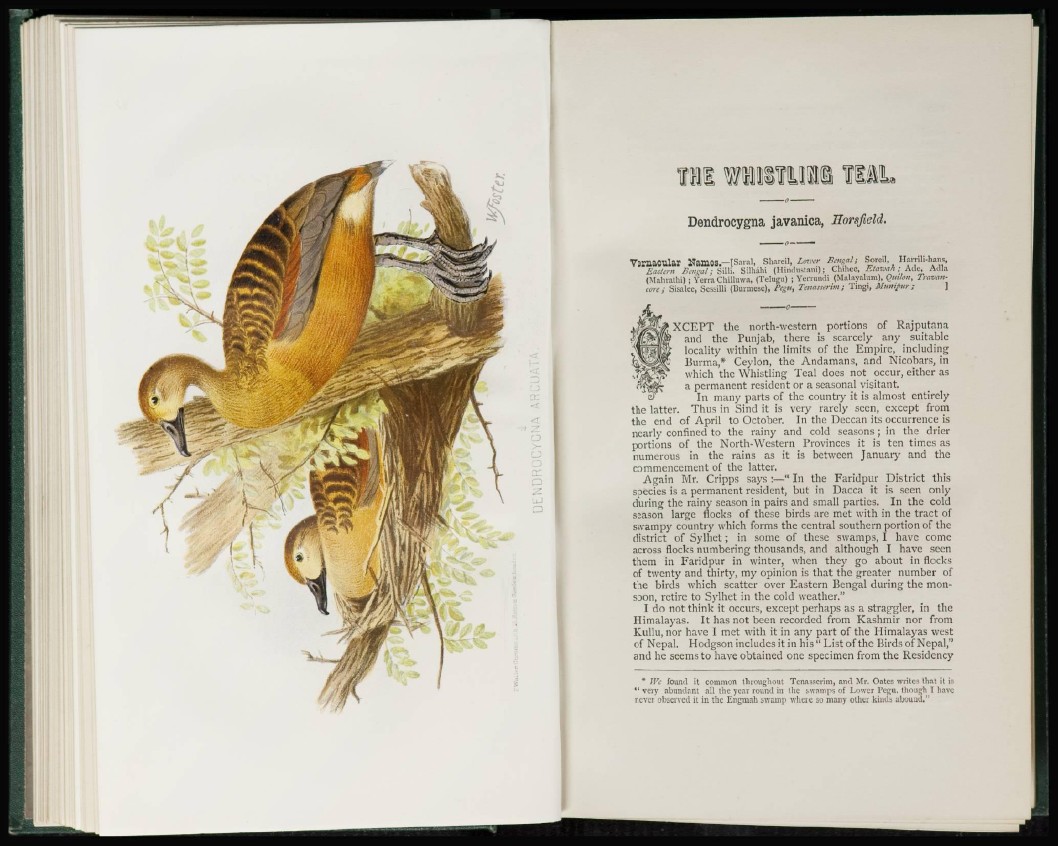
rai m m um t s äl
Dendrocygna javanica, Eorsfield.
VsrnaoUlar NamOS— [Sarai, Shareil, Lower Bmgal; Soreil, Harrili-hans,
Saitern Bengal; Silli. Silhahi (Hindustani); Chihee, Etawah; Ade, Adla
(Mahrathi) • Yerra Chilluwa, (Telugu) ; Yerrundi (Malayalum), £»!/<>», TVÖJW»-
«rc; Sisalee, Sessilli (Burmese), Pegti, Tenasserim; Tingi, Mumjmr; ]
1 XCEPT the north-western portions of Rajputana
and the Punjab, there is scarcely any suitable
locality within the limits of the Empire, including
Burma,* Ceylon, the Andamans, and Nicobars, in
which the Whistling Teal does not occur, either as
a permanent resident or a seasonal visitant.
In many parts of the country it is almost entirely
the latter. Thus in Sind it is very rarely seen, except from
the end of April to October. In the Deccan its occurrence is
nearly confined to the rainy and cold seasons ; in the drier
portions of the North-Western Provinces it is ten times as
numerous in the rains as it is between January and the
commencement of the latter.
Again Mr. Cripps says:—"In the Faridpur District this
species is a permanent resident, but in Dacca it is seen only
during the rainy season in pairs and small parties. In the cold
season large flocks of these birds are met with in the tract of
swampy country which forms the central southern portion of the
district of Sylhct ; in some of these swamps, I have come
across flocks numbering thousands, and although I have seen
them in Faridpur in winter, when they go about in flocks
of twenty and thirty, my opinion is that the greater number of
the birds which scatter over Eastern Bengal during the monsoon,
retire to Sylhct in the cold weather."
I do not think it occurs, except perhaps as a straggler, in the
Himalayas. It has not been recorded from Kashmir nor from
Kullu, nor have I met with it in any part of the Himalayas west
of Nepal. Hodgson includes it in his" List of the Birds of Nepal,"
and he seems to have obtained one specimen from the Residency
* We found it common throughout Tcnasserim, and Mr. Oatcs writes that it is
*' very abundant all the year round in the swamps of Lower Pegu, though T have
never observed it in the Engmah swamp where so many other kinds abound."